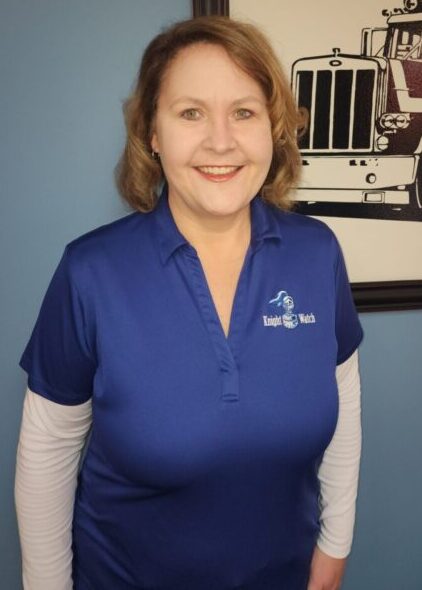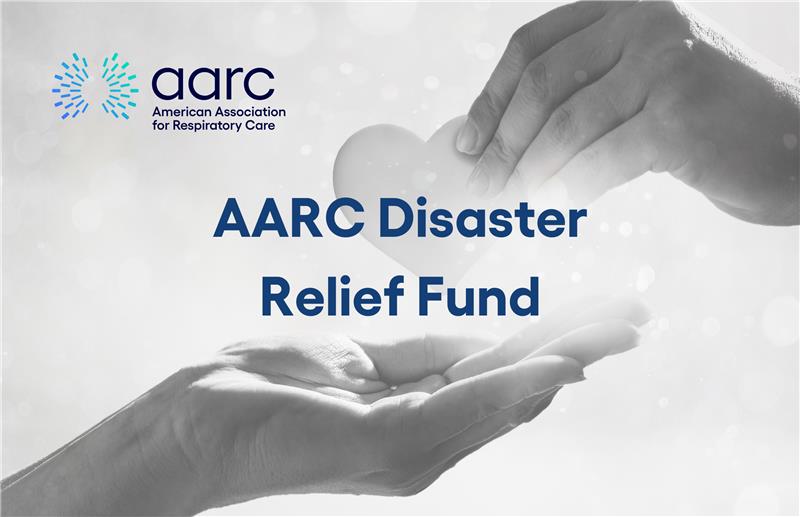
By Debbie Bunch
March 10, 2025
Shelley Hecht’s husband, Jonathan, is a long-time employee of the NBRC, working in software engineering. But his association with the profession’s credentialing organization didn’t spark her interest in becoming an RT.
Hecht, who is an RRT, RRT-SDS, credits her decision to join the profession to the personal experiences she had with therapists who were treating her young son for asthma.
“One of my sons had a history of asthma, so I was familiar with respiratory care,” she explained. “I was always so impressed because the respiratory therapists always seemed so happy and to really enjoy their career.”
Her next chapter
After 16 years as a stay-at-home mom, Hecht returned to school to earn her degree in respiratory care. By then, her youngest was in the first grade, and she felt the time was right for her next chapter.
What she didn’t realize was that this next chapter would take an unexpected turn when, shortly before graduation, she had the chance to go to work not as a traditional therapist in the hospital setting but as a compliance specialist for a company called SleepSafe Drivers.
“I was hired at SleepSafe Drivers before graduation in 2013,” said Hecht. “This position entailed CPAP set-ups, troubleshooting equipment, and supplies, and providing clinical assistance regarding compliance.”
Healthy employees, healthy bottom line
According to Hecht, SleepSafe provides the transportation industry with fatigue management and sleep apnea programs. “Even though every business is different, with its own set of challenges and opportunities, we take great pride in listening to those needs and translating them into a tailored program,” she said.
“These customized solutions improve safety and better employee health while reducing liability and overall medical costs.”
The company believes that health and safety are a nationwide issue but that ensuring health and safety for drivers must begin at the local level, which they define as ingraining those concepts into individual businesses that hire commercial drivers.
“When we use that word — local — we don’t necessarily mean geographically; we mean a method where safety and quality are the cultures, and people are that culture’s most valuable asset,” said Hecht. “Healthy employees, healthy bottom line.”
SDS boosts her career
Hecht has worked for the company for 11 years and was promoted to clinical manager in 2022 after earning her Sleep Disorders Specialty (SDS) credential from the NBRC, a move she highly recommends to anyone interested in a career in sleep.
“I work in sleep every day, and I learned so much from getting my SDS credential,” she said. “My only regret is that I did not complete it sooner.”
Her current position involves managing in-house and remote employees across the U.S., and she believes her background in RT positively impacts everything she does, from reviewing sleep studies to providing therapeutic intervention to overall patient care.
The biggest challenge comes in convincing some drivers they have obstructive sleep apnea (OSA) and need treatment. “Often my patients are required to be tested for OSA due to Department of Transportation requirements,” she said. “There are many who do not believe that they have OSA or they feel that they are being forced into therapy.”
That attitude can create barriers to effective treatment, which leads to compliance issues. Hecht says overcoming these difficulties is one of the biggest rewards of the job.
“It is music to my ears when I hear a patient tell me that they were against treatment initially, but they now know that CPAP saved their life,” she said.
Three tips
Shelley Hecht loves her job, but she admits she sometimes regrets not getting a few years of traditional RT experience first, and she recommends that new graduates seek out experience in the hospital setting before embarking on a non-traditional role. She tries to remain active in the more traditional side of the profession through her volunteer work as an item writer for the NBRC and service on the Kansas Respiratory Care Council.
What other advice does she have for therapists who might like to head down a road less taken? Here are her top three tips:
- There are many facets of respiratory therapy. Don’t be afraid to think outside of the box.
- Regardless of where you end up in your career, always continue your education. Whether it is getting your advanced credentials or degrees, knowledge is power.
- Embrace the times in your career that take you out of your comfort zone. You can do hard things!








